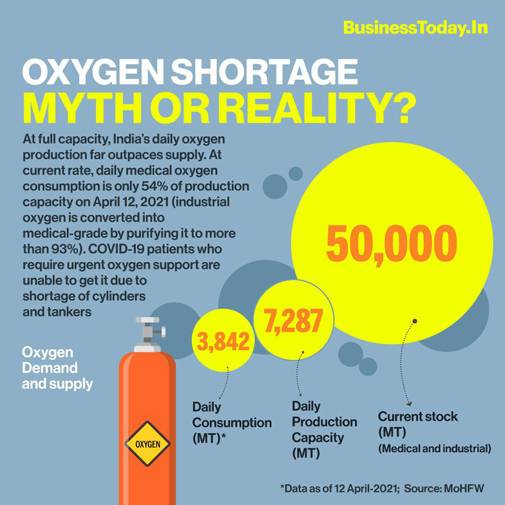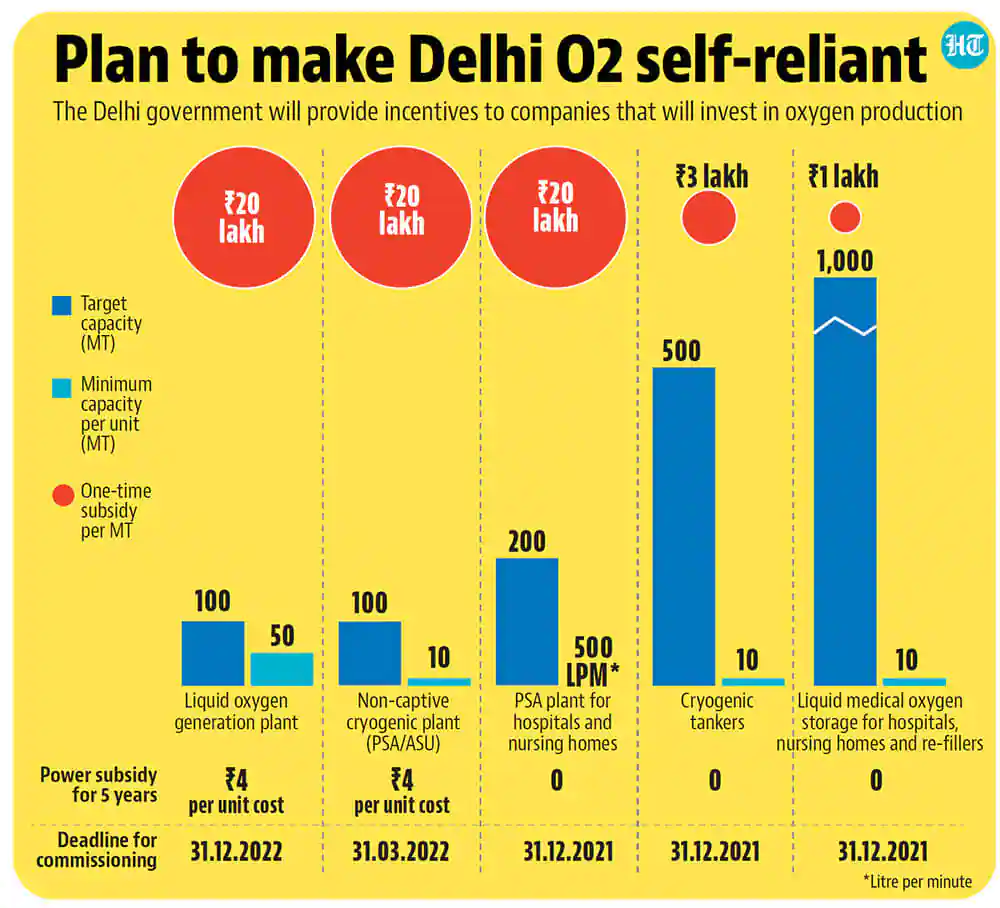Combating Repeat of Oxygen Shortage Crisis in India: What Needs to be Done
06 December 2021 | BY Promise UnboundThe pandemic has strained the global medical and healthcare industry the most. The cry for a sufficient supply of medical oxygen in the new surges has been devastating at all scales. For COVID-19 patients, medical oxygen is a vital intervention in their fight for survival and recovery. Over 512 lives were lost in India’s case because of the lack of medical oxygen storage or denial in April and May 2021 alone. This number is only for people that died while under the treatment of a hospital without oxygen. Many more were refused a bed or sent home due to a lack of oxygen, which this statistic does not measure. However, unlike what was thought initially, the problem isn’t the inadequate supply of oxygen but the lack of a robust supply to hospitals and healthcare centers.

Credits: Business Today
(The above infographic represents how India’s oxygen production capacity and stocks far outpaced the demand amidst the 2nd wave of the COVID-19 pandemic in 2021)
The global priority was on developing vaccines and focusing on test results that did catch many world governments such as India, Brazil, Italy off-guard, but there’s more to it. Leith Greenslade, the coordinator of Every Breath Counts Coalition, believes that the pandemic caused the world to see the ‘blind spot’ of the lack of a proper emergency oxygen task force in the global health architecture – all the more because of the pre-existing, unmet demands of medical oxygen for several other respiratory conditions like malaria, pneumonia, etc. Furthermore, she believes that because only a few individuals have expertise in medical oxygen, it’s vital to establish solid systems of medical oxygen supply before any further resurgences of the COVID-19 virus.
How did India respond to the Surge?
Typically, the health industry in developed countries relies on tankers to supply bulk consignments of liquid oxygen (far denser than regular air) and then is further expanded via pipes to reach each bedside. The first roadblock in India’s case came from the lack of sufficient cryogenic oxygen tankers (only 1200 tankers were present across India) to push the supply of oxygen throughout the country round-the-clock. The massive increase in cases over 24 hours wrecked the distribution network of medical oxygen, causing catastrophic consequences – including black marketers hoarding supplies and selling them at 10-50X higher prices.
Secondly, because of the lack of adequate oxygen supply, there was oxygen rationing that was implemented as per the allocated quota of each state. For states like Maharashtra, Karnataka, Delhi, that added a whole array of problems as it required constant monitoring of oxygen lines, nurses turning it off during patients’ washroom visits, with accusations of fiddling with patient’s ventilators, political favoritism, etc.
While the Indian health system was breaking down, it was the individuals who turned to social media, posting updates on the availability of beds, oxygen cylinders, and other medical resources. In addition, non-governmental organizations like the Hemkunt Foundation, Breathe India (an IIT-alumni and SaveLife foundation run non-profit body), Mission Oxygen, Khaana Chahiye, etc., rose and stepped in to meet the medical resources, food requirements of emergency workers and the vulnerable population across the nation. Such initiatives led to saving countless lives of people in dire need of medical attention, struggling with the second wave of the COVID-19 pandemic, and recovering from the aftermath of the Delta variant.
Taking the Right, Long-Term Steps
The first thing needed for figuring out the solution is careful planning, required resources, and time. As of June 2021, the Indian government has launched the ‘Project O2 For India‘, a national consortium of medical oxygen that combines prominent corporations, IITs, and NPOs in establishing the supply chain of life-critical supplies and oxygen plants.

Credits: Hindustan Times
States like Madhya Pradesh and Maharashtra are also coming up with incentives for private enterprises to set up oxygen plants and manufacture oxygen concentrators. Furthermore, prominent industrial corporations such as Coal India and Maruti Suzuki are setting up oxygen plants at several hospitals.
The world should invest in preparation for oxygen, its supply and demand chains, and required storage to be further deployed as needed. As per WHO, many low to middle-income countries struggle to meet the medical oxygen demand of over 42 million children, having just enough of 5-20% of the requirement, and battling child pneumonia and several other respiratory conditions. Investing more in medical oxygen production couldn’t have been more imminent under such overwhelming times.
What can you and I do about it?
Prevention is better than cure. It’s not just plain words from an adage, but it rings true, especially when lives are at stake.
One of the ways that can be done is by staying indoors, now more than ever, with new variants of the virus. Studies have shown that the novel Delta variant originated from India and wreaked havoc in early 2021, now spreading across the globe. Social distancing has been a differentiator in limiting the resurgences of the COVID-19 virus worldwide throughout 2020-2021.
The other small yet effective way of keeping the virus at bay can be using triple-layered, medical-grade, or N95 masks whenever outdoors. Not only does the mask keep you from contracting the virus in a crowded environment, but it also keeps the infection rates significantly down when used effectively.
Regular sanitization and disinfection of hands, objects, and surfaces frequently touched, conducting routine cleanup with UV sanitizers and hypochlorite solution.
It takes small efforts to bring a substantial and enduring change – and it’s time we start. We may not realize how it may all add up initially, but it can save a million lives in a pandemic and prevent the unfortunate chance of having a dearth of medical oxygen.
< PREV ARTICLE The COVID-19 Situation: We Need Your Help! NEXT ARTICLE > Dry Food and Clothing Drive: A Beacon of Hope Amidst the Pandemic





